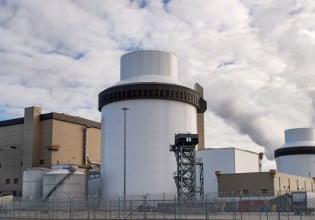Mitsubishi Electric Unveils Multi-Crystalline Silicon Solar Cell
Mitsubishi Electric Corp. announced its achievement of what the company claims is a record photoelectric conversion efficiency rate of 18.0% in a 150mm square practical use multi-crystalline silicon solar cell, an improvement of 1.2% over its previous models.
Due to increased global awareness of environmental preservation, photovoltaic production volume has been increasing as PV systems have garnered attention as a source of renewable energy. Silicon is an essential component in the wafers used to make solar cells, however the supply of silicon has not been able keep up with demand. Therefore, research continues in making thinner wafers that use less silicon and improving efficiency while also increasing electrical output.
The company claims to have achieved the conversion efficiency rate of 18.0% by adding a low reflectivity surface texture on the multi-crystalline silicon as well as developing a process to print electrodes on the surface of the silicon (metallization) and reducing shade loss of front grid electrodes. In the same surface area as previous products, the company claims to have achieved a 7% greater electric output, making it suitable for even smaller installations such as narrow roofs.
Among the cell’s features are an increased light absorption using a unique Reactive Ion Etching (RIE) method. Using a nano-sized mask material, the RIE method uses highly reactive ions generated by RF plasma, letting ions precisely etch the target materials. This decreases reflectivity from the texturized surface of the multi-crystalline silicon, increasing the amount of absorbed light. New metal electrode material reduces metallization time by approximately half that of previous models, and sustains electrical performance of crystalline. There is also an expanded effective electrical output surface area. Using modified screens and front metal electrodes, the company claims to have reduced shading loss of front grid electrodes by 40% compared with its conventional cells.
The company claims that it will begin introducing this technology into its mass produced photovoltaic modules after the end of 2007.






